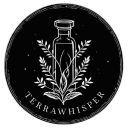
By Leen Randell
Updated: Nov 14, 2024
10 Best Herbal Teas For Menstrual Cramps
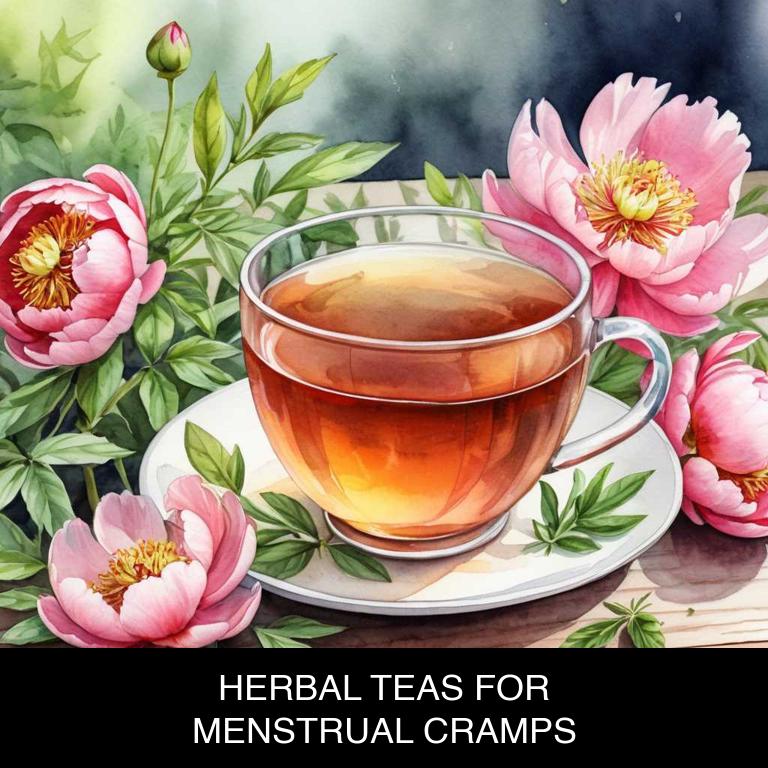
Herbal teas for menstrual cramps are a natural remedy that helps alleviate the painful and uncomfortable symptoms associated with menstrual cramps.
These teas are made from specific herbs that work together to reduce inflammation, relax the uterine muscles, and improve overall well-being. The best herbal teas for menstrual cramps include Zingiber officinale, Glycyrrhiza glabra, Vitex agnus-castus, Paeonia lactiflora, Lavandula angustifolia, Crataegus monogyna, Cimicifuga racemosa, Angelica sinensis, Ginkgo biloba, and Foeniculum vulgare.
If left untreated, menstrual cramps can significantly impact daily life, causing missed work or school, emotional distress, and a decline in overall quality of life.
1. Zingiber officinale
Zingiber officinale teas helps with menstrual cramps because of its natural anti-inflammatory properties and ability to relax muscles.
The active compound, gingerol, found in ginger, has been shown to reduce prostaglandins, hormone-like substances that cause uterine contractions and lead to cramps. Additionally, ginger has a warming effect, which can help increase blood flow and reduce pain.
This natural remedy has been used for centuries to alleviate menstrual discomfort, providing relief and promoting a sense of well-being during the menstrual cycle.

Medicinal Constituents
The list below shows the primary medicinal constituents in Zingiber officinale teas that help with menstrual cramps.
- Gingerols: These compounds have analgesic and anti-inflammatory properties, which help to alleviate menstrual cramps by reducing prostaglandin levels and decreasing pain perception.
- Shogaols: Similar to gingerols, shogaols have potent anti-inflammatory and analgesic effects, which contribute to the relief of menstrual cramps by reducing inflammation and pain.
- Volatile oils: These compounds exhibit anti-inflammatory and analgesic properties, which help to ease menstrual cramps by reducing inflammation and pain in the uterine muscles.
Parts Used
The list below shows the primary parts of Zingiber officinale used to make teas for menstrual cramps.
- Rhyzomes: The most commonly used part, as it contains the highest concentration of gingerols, which have anti-inflammatory properties that help alleviate pain.
- Roots: Also used for their gingerol content, which provides relief from menstrual cramps and other symptoms associated with PMS.
- Leaves: While not as commonly used as rhyzomes or roots, some herbal teas use ginger leaves for their mild anti-inflammatory properties and soothing effects.
2. Glycyrrhiza glabra
Glycyrrhiza glabra teas helps with menstrual cramps because it contains compounds like glycyrrhizin and flavonoids that have anti-inflammatory and antispasmodic properties.
These compounds help to relax the uterine muscles, reducing the severity of cramps. Additionally, the tea's anti-inflammatory properties may help to reduce prostaglandins, hormone-like substances that cause pain and inflammation during menstruation.
By reducing these symptoms, Glycyrrhiza glabra teas may provide relief from menstrual cramps, promoting a more comfortable and manageable period.

Medicinal Constituents
The list below shows the primary medicinal constituents in Glycyrrhiza glabra teas that help with menstrual cramps.
- Flavonoids: Help alleviate menstrual cramps by reducing inflammation and relaxing the uterine muscles, thereby providing relief from pain and discomfort.
- Saponins: Act as a natural anti-inflammatory agent, reducing the severity of menstrual cramps and other symptoms associated with PMS.
- Terpenoids: Possess analgesic and anti-inflammatory properties, which help to relieve menstrual cramps and ease other symptoms associated with menstrual disorders.
Parts Used
The list below shows the primary parts of Glycyrrhiza glabra used to make teas for menstrual cramps.
- Roots: They are used to make teas for menstrual cramps because they contain glycyrrhizin, a compound that helps to reduce inflammation and relax the uterine muscles.
- Leaves: They are used to make teas for menstrual cramps because they have anti-inflammatory properties that help to soothe cramps and reduce pain.
- Roots: They are also used to make teas for menstrual cramps because they have been traditionally used to treat various gynecological issues, including menstrual cramps, due to their antispasmodic and anti-inflammatory properties.
3. Vitex agnus-castus
Vitex agnus-castus teas helps with menstrual cramps because it is believed to regulate hormonal imbalances, particularly progesterone levels, which can contribute to cramp relief.
The tea is thought to stimulate the release of dopamine and serotonin, neurotransmitters that help to reduce pain perception. Additionally, Vitex agnus-castus contains flavonoids and phenolic acids, which have anti-inflammatory properties that may help to ease cramping and discomfort associated with menstrual periods.
This natural remedy has been used for centuries to alleviate menstrual symptoms.
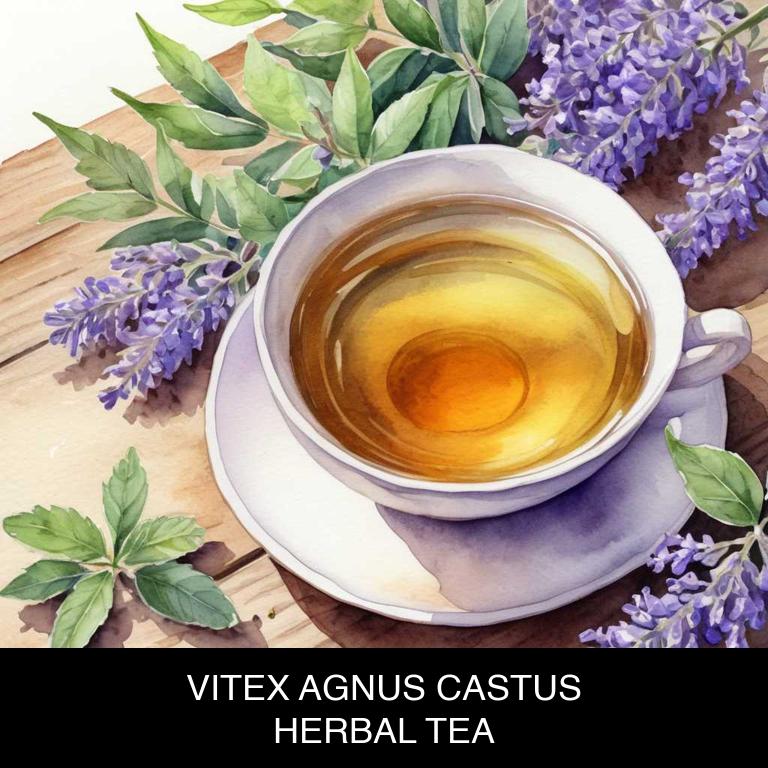
Medicinal Constituents
The list below shows the primary medicinal constituents in Vitex agnus-castus teas that help with menstrual cramps.
- Iridoid glycosides: These compounds have anti-inflammatory properties that help reduce menstrual cramp severity by inhibiting prostaglandin production, which is a key contributor to cramping.
- Phenylethanoids: Phenylethanoids in Vitex agnus-castus have been shown to exhibit anti-spasmodic effects, helping to relax uterine muscles and alleviate menstrual cramp pain.
- Flavonoids: The flavonoids present in Vitex agnus-castus teas have antioxidant and anti-inflammatory properties that help reduce menstrual cramp severity by inhibiting oxidative stress and inflammation in the uterine muscles.
Parts Used
The list below shows the primary parts of Vitex agnus-castus used to make teas for menstrual cramps.
- Flowers: They are the most commonly used part due to their high concentration of iridoid glycosides, which are responsible for their medicinal properties.
- Leaves: Leaves are a close second in usage, as they also contain iridoid glycosides and are often used in combination with flowers for their potential benefits in relieving menstrual cramps.
- Seeds: Seeds are another part of the plant used to make teas for menstrual cramps, as they are rich in saponins and flavonoids, which may help to soothe and calm menstrual discomfort.
4. Paeonia lactiflora
Paeonia lactiflora teas helps with menstrual cramps because it is rich in anti-inflammatory compounds that ease uterine contractions.
The plant's active ingredients, including paeonol and paeoniflorin, have analgesic and antispasmodic properties that reduce pain and discomfort associated with menstrual cramps. The tea also has a soothing effect on the nervous system, promoting relaxation and reducing stress.
Regular consumption of Paeonia lactiflora tea may help regulate menstrual cycles and alleviate symptoms of menstrual cramps, providing relief for women experiencing this common issue.
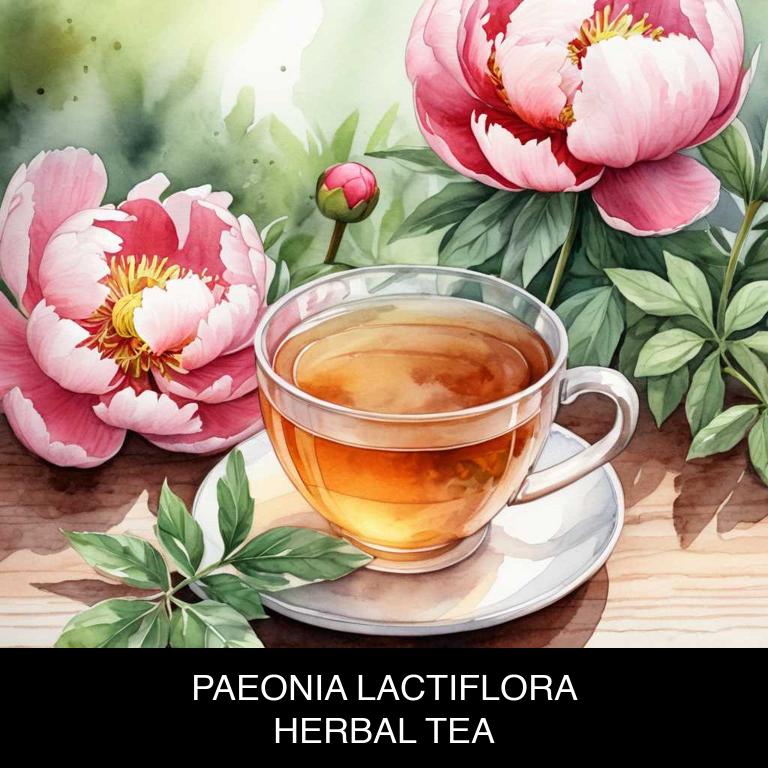
Medicinal Constituents
The list below shows the primary medicinal constituents in Paeonia lactiflora teas that help with menstrual cramps.
- Isoferulic acid: This compound has anti-inflammatory properties, which help to reduce pain and discomfort associated with menstrual cramps.
- Paeniflorin: As a spasmolytic agent, paeniflorin helps to relax the uterine muscles, thereby reducing the severity of menstrual cramps.
- Paeoniflorin: Similar to paeniflorin, paeoniflorin also exhibits spasmolytic properties, which contribute to its analgesic and anti-inflammatory effects in alleviating menstrual cramp symptoms.
Parts Used
The list below shows the primary parts of Paeonia lactiflora used to make teas for menstrual cramps.
- Roots: Rich in paeonol and paeoniflorin, which have anti-inflammatory and pain-relieving properties.
- Leaves: Contain compounds that help to relax the uterine muscles and reduce spasms.
- Flowers: High in flavonoids and alkaloids that have a sedative effect on the uterus and help to reduce cramping.
5. Lavandula angustifolia
Lavandula angustifolia teas helps with menstrual cramps because it contains compounds that have a relaxing and anti-inflammatory effect on the body.
The tea's calming properties can help to soothe the uterine muscles, reducing spasms and contractions that cause menstrual pain. Additionally, the tea's antioxidant properties can help to reduce inflammation and promote overall hormonal balance, providing relief from menstrual cramps and promoting a sense of well-being.
This natural remedy has been used for centuries to alleviate menstrual discomfort.

Medicinal Constituents
The list below shows the primary medicinal constituents in Lavandula angustifolia teas that help with menstrual cramps.
- Linalool: This terpene has analgesic and anti-inflammatory properties, which help to reduce pain and discomfort associated with menstrual cramps.
- Linalyl acetate: As a terpene with analgesic and sedative properties, it helps to calm the body, reducing muscle tension and pain caused by menstrual cramps.
- Lavandulol: This terpene has anti-inflammatory and antispasmodic properties, which help to relax the uterine muscles, reduce cramping, and alleviate symptoms of menstrual discomfort.
Parts Used
The list below shows the primary parts of Lavandula angustifolia used to make teas for menstrual cramps.
- Leaves: Rich in antispasmodic compounds that help to relax the uterine muscles, reducing menstrual cramp pain.
- Flowers: Contain apigenin and linalool, which have anti-inflammatory and relaxing properties that alleviate menstrual cramp discomfort.
- Stems: Contain a compound called kaempferol, which has been shown to have anti-inflammatory effects, helping to soothe menstrual cramp pain.
6. Crataegus monogyna
Crataegus monogyna teas helps with menstrual cramps because of its rich content of flavonoids, which have potent anti-inflammatory properties.
These compounds help to relax the uterine muscles, reducing spasms and pain associated with menstrual cramps. Additionally, the tea's antioxidant properties help to regulate hormone balance, reducing the severity of menstrual cramps.
The anti-inflammatory and antioxidant effects of Crataegus monogyna teas work together to provide relief from menstrual cramps, promoting a more comfortable and manageable menstrual experience for many women.
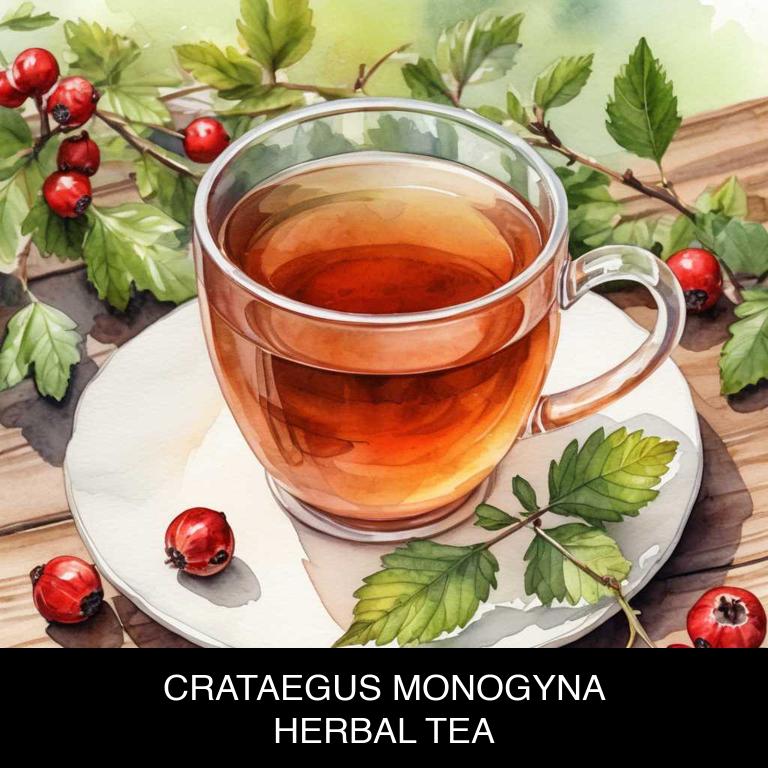
Medicinal Constituents
The list below shows the primary medicinal constituents in Crataegus monogyna teas that help with menstrual cramps.
- Flavonoids: They help alleviate menstrual cramps by reducing inflammation and relaxing smooth muscles, thereby providing pain relief.
- Phenolic acids: They act as antioxidants, reducing oxidative stress and inflammation in the body, which can contribute to menstrual cramp relief.
- Tannins: They have astringent properties that help reduce menstrual flow and alleviate cramps by constricting blood vessels and reducing uterine contractions.
Parts Used
The list below shows the primary parts of Crataegus monogyna used to make teas for menstrual cramps.
- Leaves: The leaves of Crataegus monogyna are used to make teas for menstrual cramps because they contain flavonoids and tannins that have anti-inflammatory and pain-relieving properties.
- Fruits: The fruits of Crataegus monogyna are used to make teas for menstrual cramps because they are rich in vitamins, minerals, and antioxidants that help to reduce inflammation and ease menstrual cramp symptoms.
- Buds: The buds of Crataegus monogyna are used to make teas for menstrual cramps because they contain bioflavonoids and other compounds that help to relax the uterine muscles and alleviate menstrual cramp pain.
7. Cimicifuga racemosa
Cimicifuga racemosa teas helps with menstrual cramps because it contains compounds that have a direct impact on the body's hormonal balance and muscle relaxation.
The tea's active ingredients, such as actein and 23-deacactein, have been shown to have a spasmolytic effect, helping to ease cramp-inducing muscle contractions in the uterus.
Additionally, Cimicifuga racemosa tea is believed to help regulate menstrual cycles, reduce inflammation, and promote a sense of calm, all of which can contribute to alleviating menstrual cramp discomfort.

Medicinal Constituents
The list below shows the primary medicinal constituents in Cimicifuga racemosa teas that help with menstrual cramps.
- Isoferulic acid: This phenolic compound helps reduce inflammation and pain associated with menstrual cramps by inhibiting the production of prostaglandins, which are hormone-like substances that cause the uterus to contract.
- Actein: As a triterpene saponin, actein has anti-inflammatory and analgesic properties, which help alleviate menstrual cramps by reducing muscle contractions and inflammation in the uterus.
- Dehydrocostus lactone: This sesquiterpene lactone has anti-inflammatory and analgesic effects, contributing to relief from menstrual cramps by reducing uterine contractions and pain.
Parts Used
The list below shows the primary parts of Cimicifuga racemosa used to make teas for menstrual cramps.
- Roots: The roots are the most commonly used part due to their high concentration of compounds like actein and cimiracemoside, which have been traditionally used to alleviate menstrual cramps.
- Leaves: Some herbalists use leaves, as they contain similar compounds to the roots and can be used as a substitute, although they are less potent.
- Stems: Stems are occasionally used, but they are less commonly used than roots and leaves, as they contain fewer bioactive compounds.
8. Angelica sinensis
Angelica sinensis teas helps with menstrual cramps because it contains compounds like ferulic acid and ligustilide, which have potent anti-inflammatory properties.
These compounds help to reduce prostaglandins, hormone-like substances responsible for causing uterine contractions and pain during menstruation. Additionally, the tea's flavonoids and coumarins may help to relax the uterine muscles and improve blood flow, further alleviating menstrual cramp symptoms.
As a result, Angelica sinensis teas have been used in traditional Chinese medicine for centuries to alleviate menstrual discomfort and promote overall female reproductive health.

Medicinal Constituents
The list below shows the primary medicinal constituents in Angelica sinensis teas that help with menstrual cramps.
- Ferulic acid: It helps reduce menstrual cramps by inhibiting the production of prostaglandins, which are hormone-like substances that cause uterine contractions and pain.
- Ligustilide: It has anti-inflammatory and anti-spasmodic properties, which help to relax the uterine muscles and reduce cramping and discomfort associated with menstruation.
- Butylphthalide: It has a sedative effect on the nervous system, which helps to reduce anxiety and pain associated with menstrual cramps, as well as relax the uterine muscles to alleviate cramping.
Parts Used
The list below shows the primary parts of Angelica sinensis used to make teas for menstrual cramps.
- Roots: The roots are the primary source of angelica sinensis's medicinal properties, including its anti-inflammatory and antispasmodic effects, making them effective in relieving menstrual cramps.
- Leaves: The leaves of angelica sinensis contain a high concentration of essential oils, including ligustilide, which has a sedative effect and helps to alleviate menstrual cramp pain.
- Rhyzomes: The rhyzomes, or underground stems, of angelica sinensis contain compounds that help to relax the uterine muscles and reduce inflammation, providing relief from menstrual cramps.
9. Ginkgo biloba
Ginkgo biloba teas helps with menstrual cramps because it contains flavonoids and terpenoids that have anti-inflammatory properties.
These compounds help to relax the uterine muscles, reducing spasms and discomfort associated with menstrual cramps. The tea's flavonoids also have a soothing effect on the nervous system, reducing anxiety and stress that can exacerbate menstrual cramps. Additionally, ginkgo biloba's antioxidant properties help to reduce inflammation, promoting a more comfortable and manageable menstrual cycle.
This natural remedy offers a holistic approach to alleviating menstrual cramps.

Medicinal Constituents
The list below shows the primary medicinal constituents in Ginkgo biloba teas that help with menstrual cramps.
- Flavonoids: These compounds have anti-inflammatory properties, which can help reduce pain and discomfort associated with menstrual cramps.
- Terpenoids: They may help relax smooth muscle and reduce spasms, providing relief from menstrual cramp pain.
- Triterpenoids: They have anti-inflammatory and antioxidant effects, which may help reduce inflammation and alleviate menstrual cramp symptoms.
Parts Used
The list below shows the primary parts of Ginkgo biloba used to make teas for menstrual cramps.
- Leaves: The leaves are the most commonly used part of Ginkgo biloba due to their high flavonoid content, which helps to relax uterine muscles and reduce pain.
- Seeds: Ginkgo biloba seeds are used for their anti-inflammatory properties, which can help to reduce prostaglandins and alleviate menstrual cramp symptoms.
- Barks: Ginkgo biloba bark is sometimes used due to its potential anti-inflammatory and antispasmodic effects, which may help to ease menstrual cramp pain and discomfort.
10. Foeniculum vulgare
Foeniculum vulgare teas helps with menstrual cramps because it contains compounds that have a natural anti-inflammatory and antispasmodic effect.
The active ingredients, particularly anethole and fenchone, help to relax the uterine muscles, reducing spasms and cramping associated with PMS. Additionally, the tea's warming properties help to increase blood flow and reduce pain, providing relief from discomfort and promoting overall well-being.
This natural remedy has been used for centuries to alleviate menstrual cramps, making it a popular choice for women seeking a holistic solution.
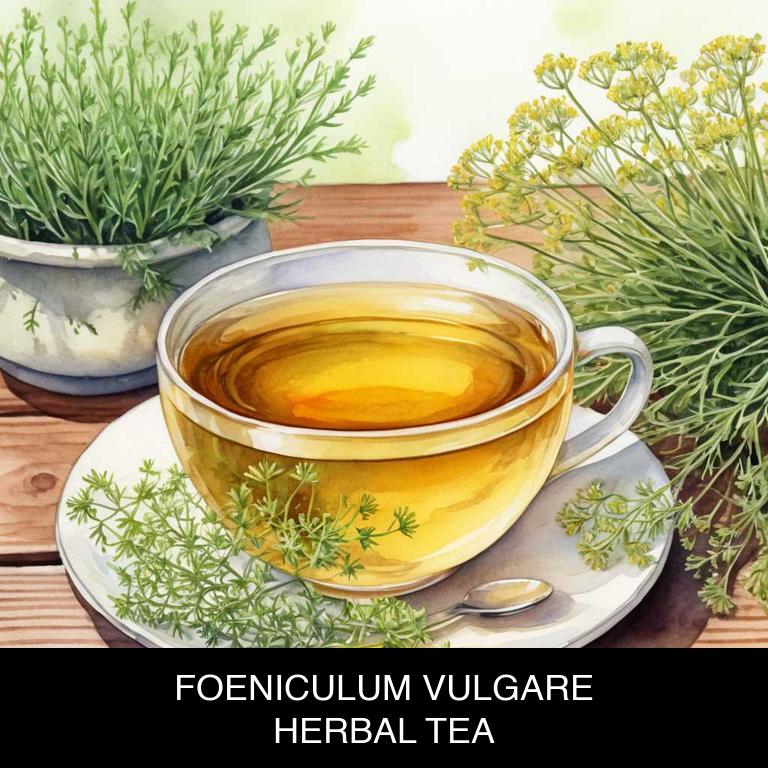
Medicinal Constituents
The list below shows the primary medicinal constituents in Foeniculum vulgare teas that help with menstrual cramps.
- Anethole: This terpene helps reduce menstrual cramps by inhibiting the production of prostaglandins, which are hormone-like substances that cause pain and inflammation in the uterus.
- Fenchone: This terpene has analgesic and anti-inflammatory properties, which help alleviate menstrual cramps by reducing the severity of pain and inflammation in the lower abdomen.
- Coumarins: These phenolic compounds have antispasmodic properties, which help relax the uterine muscles and reduce the frequency and severity of menstrual cramps.
Parts Used
The list below shows the primary parts of Foeniculum vulgare used to make teas for menstrual cramps.
- Leaves: Foeniculum vulgare leaves are used to make teas for menstrual cramps due to their high content of estragole, which has analgesic and anti-inflammatory properties.
- Seeds: Foeniculum vulgare seeds are used to make teas for menstrual cramps due to their high content of estragole and other compounds that help to reduce pain and inflammation.
- Buds: Foeniculum vulgare buds are used to make teas for menstrual cramps due to their high content of antioxidants and anti-inflammatory compounds that help to alleviate pain and discomfort.
